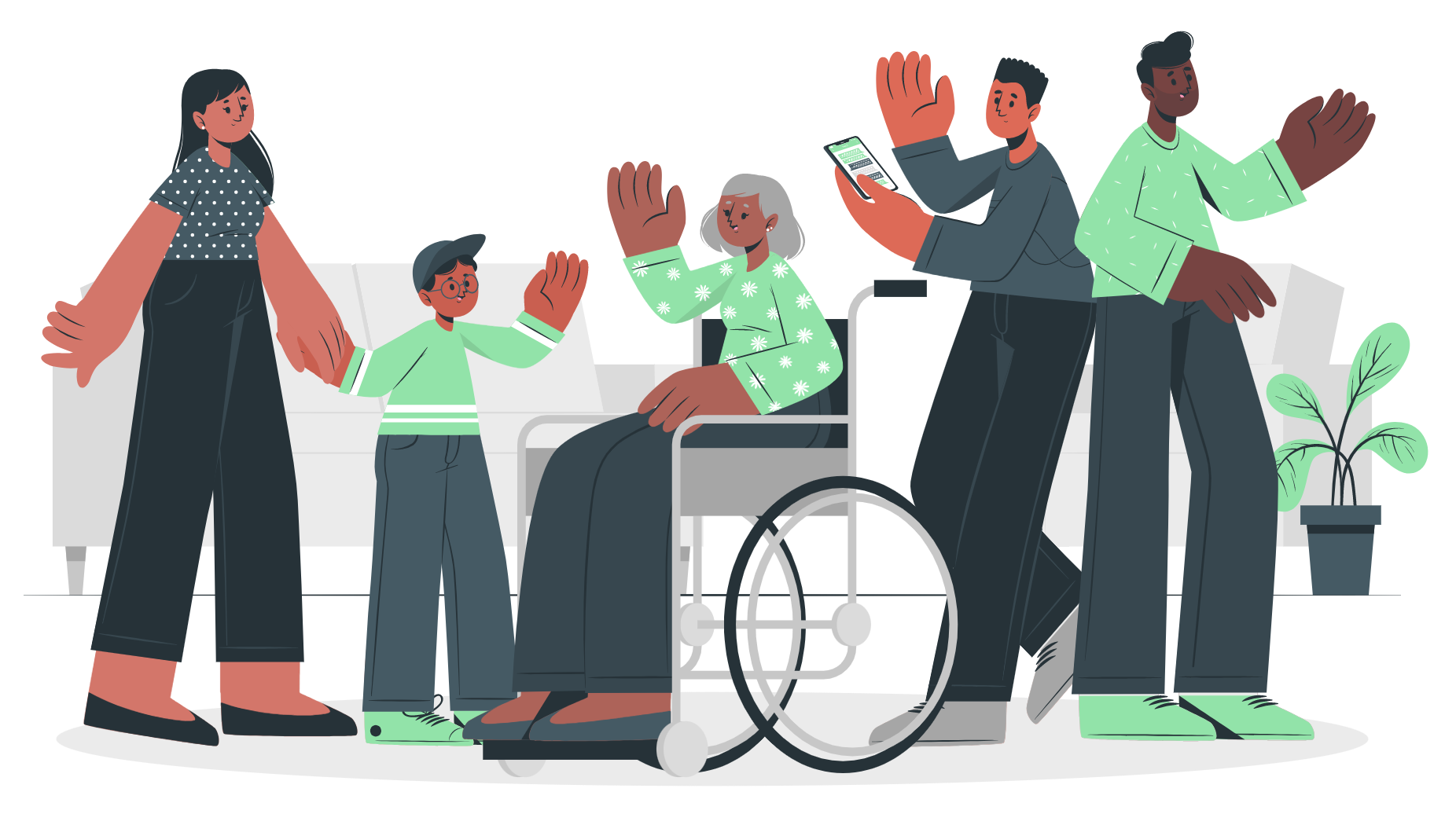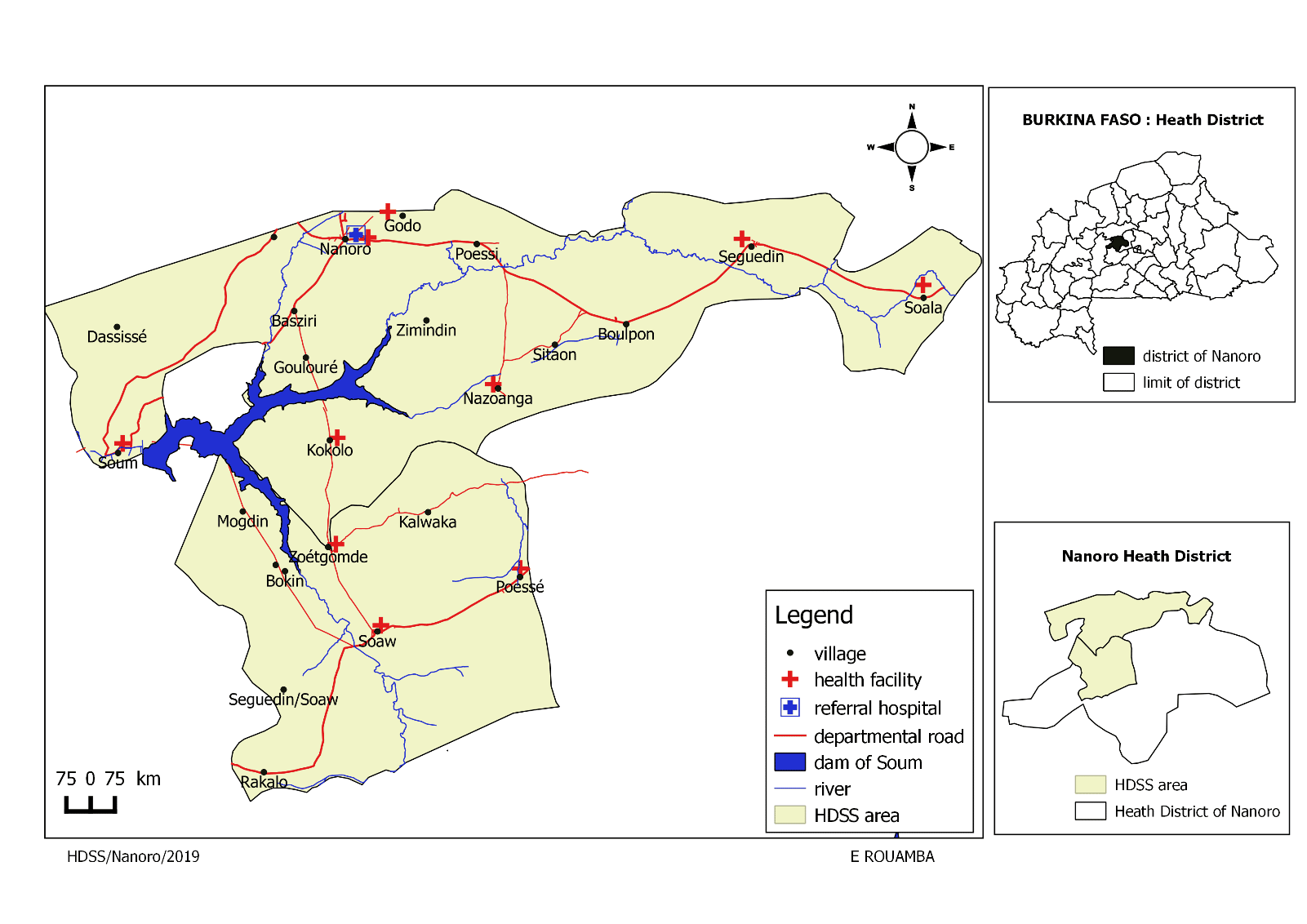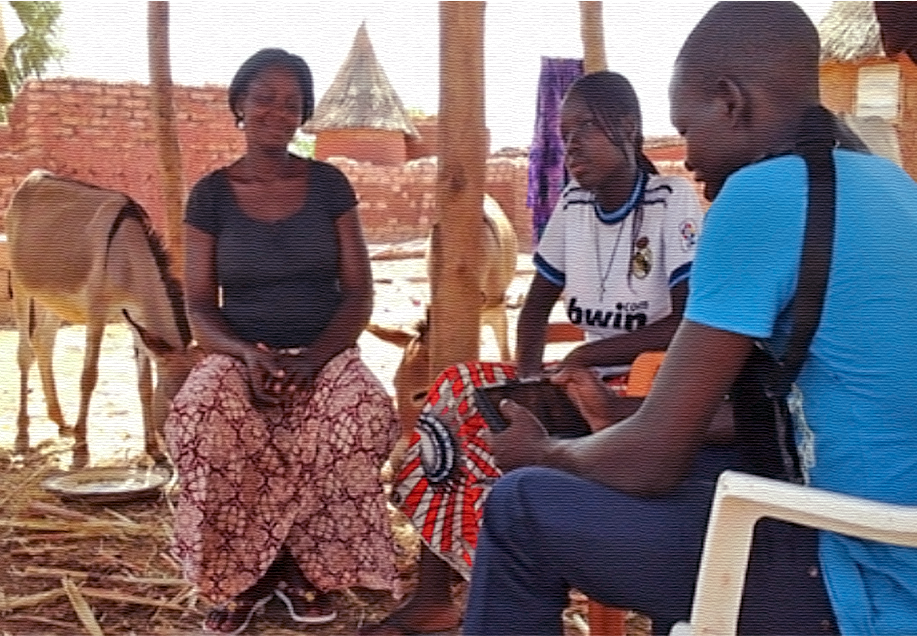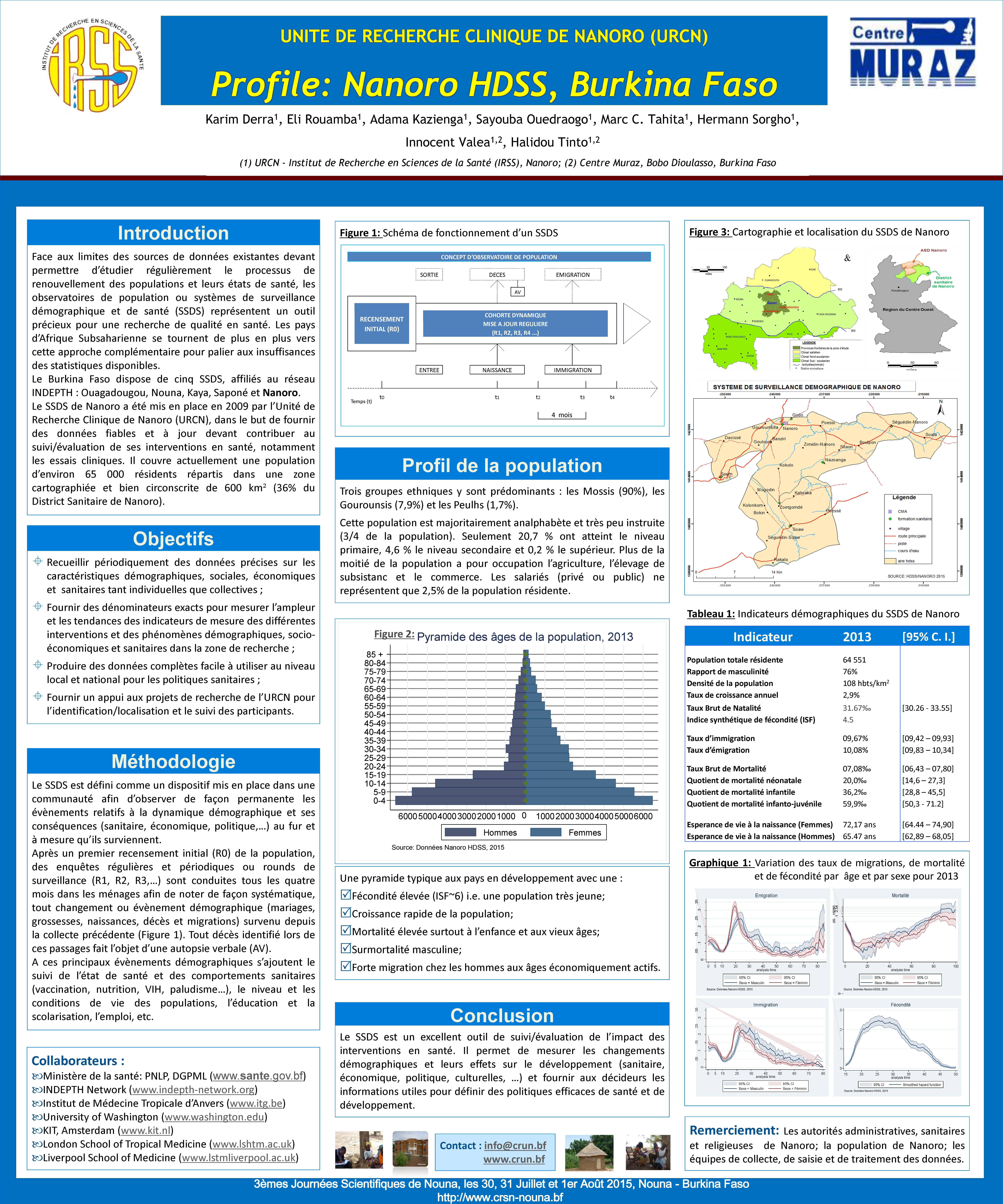- The Nanoro Health and Demographic Surveillance System (HDSS) was established in 2009 by the Clinical Research Unit of Nanoro - Institut de Recherche en Sciences de la Santé (IRSS-CRUN) with the aim of providing a core framework for clinical trials and also to support the Burkina Faso health authorities in generating epidemiological data that can contribute to the setup and assessment of health interventions. This is achieved by providing an excellent platform for generating epidemiological data fully compliant with international standards. The site activities are currently oriented towards the research (drugs and vaccines) on diseases of public health importance with a specific focus on malaria.
- Nanoro is a rural area located in the Centre-West of the country, at approximately 85 Km from the capital city, Ouagadougou. The HDSS area lies between longitudes 1°92537 and 2°3146 W and latitudes 12°57955 and 12°72863 N and covers 24 villages which represents a surface of 594.3 Km2 (~36% of the Nanoro Health District area). In this area, health care is provided by ten peripheral health facilities and one referral hospital.
- The CRUN clinical laboratory provide quality laboratory tests that are significant for addressing medical and public health needs.
- Nanaro site is in the Sudano–Sahelian climate which has two main seasons: a rainy season from June to October (average rainfall of 450-700 mm/year, average temperature >30ºC) followed by a dry season from November to May (the temperature may vary from 17ºC in December to a maximum of 43ºC in April).
- The population under surveillance is about 66 500 residents (in 2021) with a majority of illiterate people. They are subsistence farmers, cattle-keepers and housewives. The main ethnic groups are Mossi, Gourounsi and Fulani.
HDSS's various divisions
HDSS
-
 Geographical information systems Manager
Geographical information systems Manager
(Geographer-Cartographer)
-

Verbal Autopsies Interviewers
(Sociologists) -
 Field Supervisors
Field Supervisors -

Fieldworkers -

Community Key Informants



